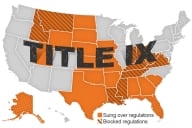You have /5 articles left.
Sign up for a free account or log in.
Only 5 of the 21 researchers tipped by Thomson Reuters for a Nobel prize this year are based exclusively at institutions outside the United States.
The data provider’s annual list of predictions is based on an analysis of citation profiles and has correctly predicted the winners of nine prizes in economics, physics, chemistry and physiology or medicine since 2002. Since 2006, Thomson Reuters has made three new predictions for the prizes every year, but it also considers previous years’ predictions to remain valid.
This year’s list is largely dominated by researchers from American universities. Those outside the United States include Ernest McCulloch and James Till of the Ontario Cancer Institute, who are tipped for their discovery of stem cells, alongside Shinya Yamanaka who is affiliated with both Kyoto University and the University of California at San Francisco.
Kyoto is also home to Susumu Kitagawa, who has been tipped for the chemistry prize alongside Omar Yaghi of the University of California at Los Angeles.
Thomas Ebbesen of the University of Strasbourg has been tipped for the physics prize, while Britain's sole mention goes to John Moore, of the University of Edinburgh and the London School of Economics. He is predicted to share the economics prize with Nobuhiro Kiyotaki, of Princeton University, for their formulation of an economic model demonstrating how small economic shocks can cause significant drops in output due to credit restrictions.
“It sounds familiar, doesn’t it?” commented David Pendlebury, the Thomson Reuters citation analyst responsible for the predictions. He said the economics prize had been particularly difficult to predict in the past two years because the financial crisis has cast doubt on the accuracy of a lot of highly cited work.
Pendlebury added that the point of the predictions is to demonstrate that citations constitute a “powerful indicator of peer esteem” for researchers at the top end of the citation distribution. “Nobel winners typically rank in the top 10th or 100th of a percent in their field.”
He described his method as focusing on these “citation laureates” and considering whether there were particular discoveries for which they could be credited alongside no more than two others, as is required by the Nobel committee.
He also took into account whether they had won any other prizes and whether a Nobel prize had been awarded recently in their subfield.
The dominance of American institutions in the list is not necessarily an indicator of the country’s present research strength, Pendlebury said, because the Nobel prize is often awarded for work done several decades ago.
The prizewinners will be announced in October. All of the tipped researchers contacted by Times Higher Education declined or were unable to comment.








